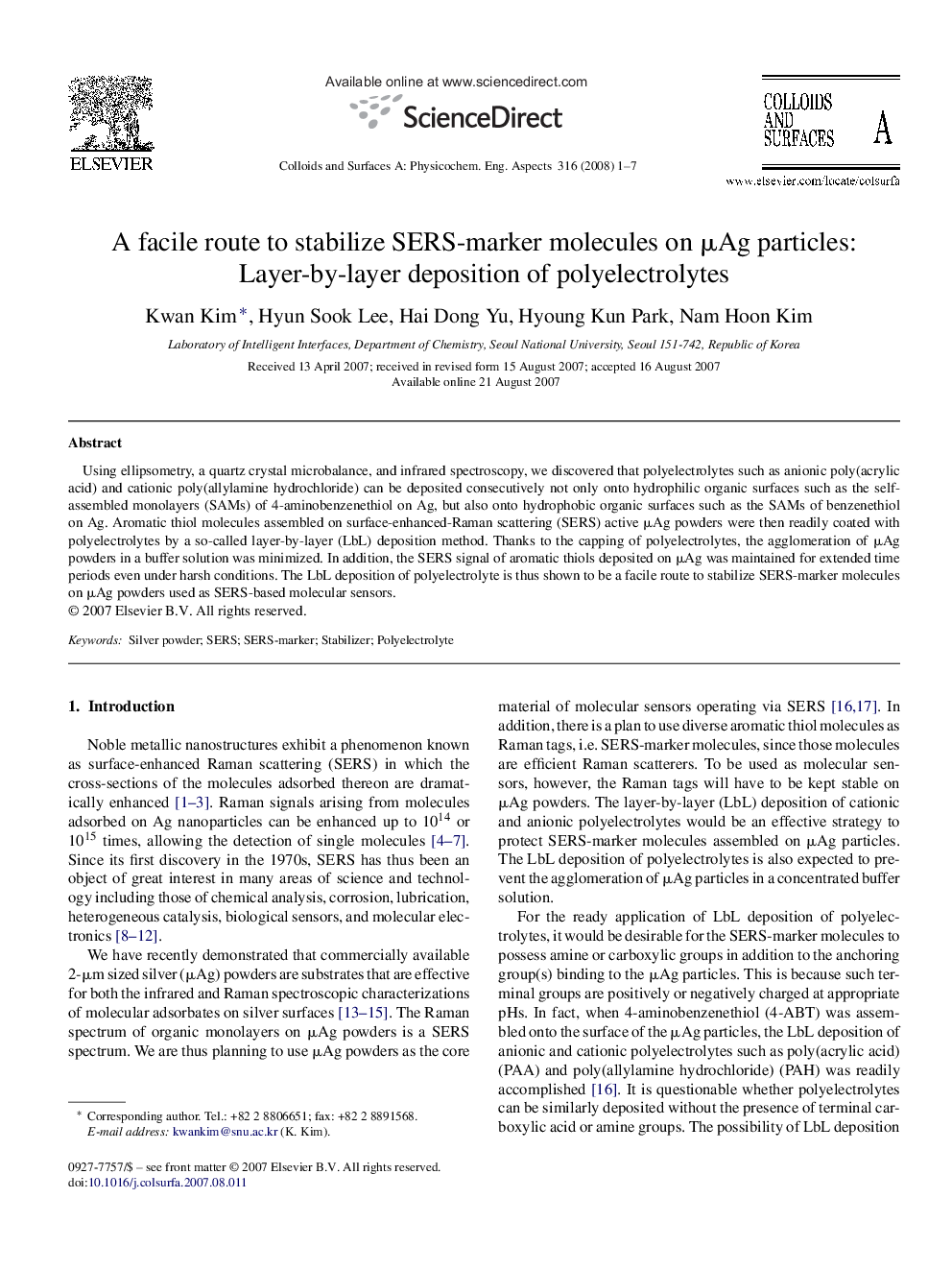| Article ID | Journal | Published Year | Pages | File Type |
|---|---|---|---|---|
| 597017 | Colloids and Surfaces A: Physicochemical and Engineering Aspects | 2008 | 7 Pages |
Using ellipsometry, a quartz crystal microbalance, and infrared spectroscopy, we discovered that polyelectrolytes such as anionic poly(acrylic acid) and cationic poly(allylamine hydrochloride) can be deposited consecutively not only onto hydrophilic organic surfaces such as the self-assembled monolayers (SAMs) of 4-aminobenzenethiol on Ag, but also onto hydrophobic organic surfaces such as the SAMs of benzenethiol on Ag. Aromatic thiol molecules assembled on surface-enhanced-Raman scattering (SERS) active μAg powders were then readily coated with polyelectrolytes by a so-called layer-by-layer (LbL) deposition method. Thanks to the capping of polyelectrolytes, the agglomeration of μAg powders in a buffer solution was minimized. In addition, the SERS signal of aromatic thiols deposited on μAg was maintained for extended time periods even under harsh conditions. The LbL deposition of polyelectrolyte is thus shown to be a facile route to stabilize SERS-marker molecules on μAg powders used as SERS-based molecular sensors.
